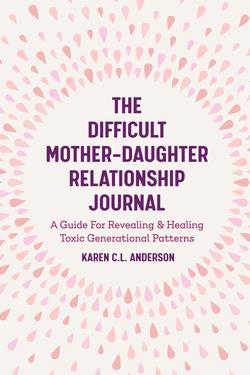Читать книгу The Difficult Mother-Daughter Relationship Journal - Karen C.L. Anderson - Страница 12
На сайте Литреса книга снята с продажи.
ОглавлениеGuidelines
1. Give yourself as much time as you need/want. There’s no rush.
2. Engage with compassionate objectivity, and examine yourself and your relationship with fascination and curiosity, rather than harsh judgment, shame, and guilt.
3. Don’t judge what comes through. Don’t censor or analyze your words or yourself as you write.
4. When a prompt asks you to consider your thoughts, keep this in mind:
Thoughts are simply the 50,000 to 70,000 interpretations, sentences, judgments, and opinions that run through your brain every day, all day. They are merely sounds, words, stories, and bits of language.
5. When a prompt asks you to consider your emotions, how you feel or felt, keep this in mind:
Emotions are energy in motion—vibrations in your body that you can feel physically—that are usually described in one word. Happy. Sad. Angry. Scared. Happiness has a vibration. Anger has a vibration. Sadness has a vibration. Fear has a vibration.
So when asked how you feel or felt, take a moment to quiet your mind, tap into the sensations in your body, and use one or two simple feeling words.
For example:
I felt grief.
I felt delight.
I felt enraged.
Note: I felt like she should have known better. Or: I felt that she was disrespectful. These are thoughts.
6. If she is no longer here—that is, if she has died—change the question and or tense of the question to reflect that.
7. For simplicity’s sake, from here on out, rather than overusing the words “mother” and “daughter” I will mostly use the words “her” and “she,” which you can apply to your particular situation.
